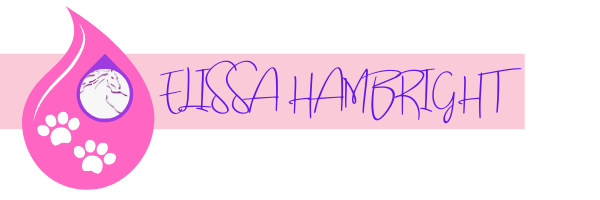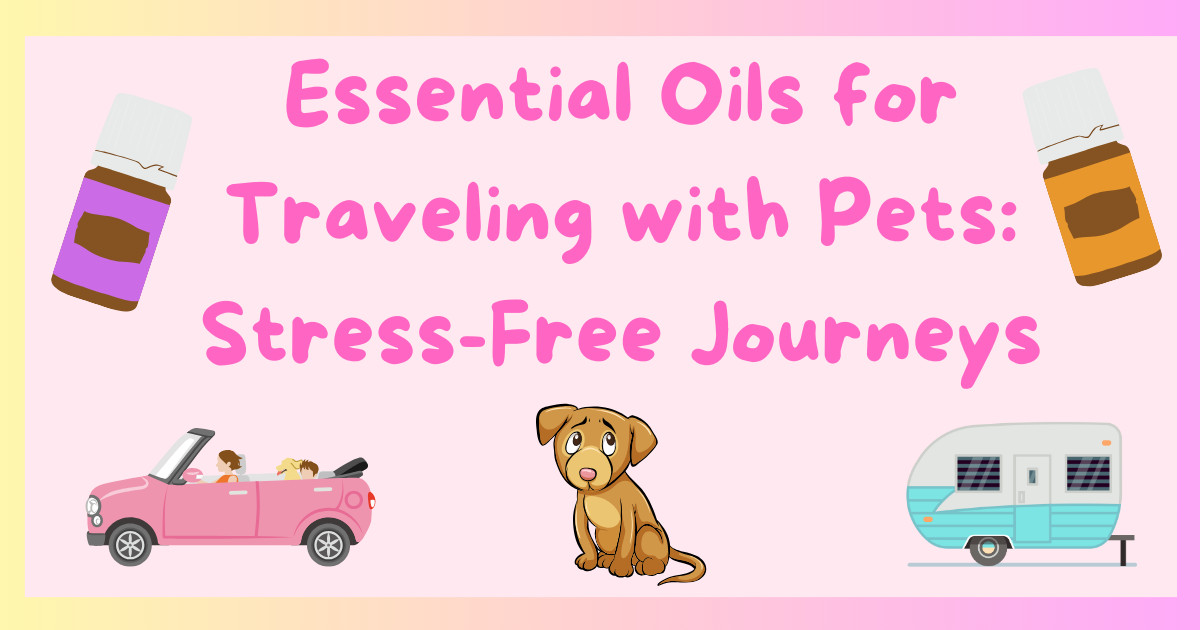
Traveling with your furry companion can be a rewarding experience, but it also comes with its fair share of challenges. Pets, especially dogs, can often experience stress, anxiety, and stomach upset during journeys. Essential oils, derived from plants, have gained popularity for their potential to help these issues in pets. In this blog, we'll explore the world of essential oils for traveling with dogs, providing you with valuable insights, safety tips, and alternative methods to help ensure your furry friend enjoys a comfortable and stress-free journey.
Understanding Pet Travel Anxiety
Before delving into the world of essential oils, it's essential to understand the root causes of pet travel anxiety. Traveling, whether by car, plane, or any other means, can be unsettling for pets due to several reasons:
1. New Environments: Dogs are creatures of habit, and being in a new and unfamiliar environment can trigger anxiety.
2. Motion Sickness: Just like humans, dogs can also suffer from motion sickness during car rides or flights, leading to nausea and discomfort.
3. Separation Anxiety: Leaving their familiar surroundings or being separated from their owners can make pets anxious.
4. Loud Noises: The noises associated with travel, such as engine sounds, turbulence, or loud fellow passengers, can distress pets.
Now that we understand the potential causes of travel anxiety, let's explore how essential oils can help mitigate these issues.
The Power of Essential Oils
Essential oils have been used for centuries for their wellness properties. When used correctly, these natural extracts can help alleviate tension and discomfort in pets, including dogs. Here are some essential oils that can come in handy during travel:
1. Lavender Oil: Lavender is known as the 'Swiss Army knife' of essential oils. When in doubt, try lavender. It's also well known and studied for its calming and relaxing properties. It can help relax dogs and reduce tension during travel.
2. Roman Chamomile Oil: This soothing essential oil is known to promote relaxation and calmness in dogs. Its gentle, relaxing properties make it useful for reducing tension during stressful situations, making it an excellent choice for soothing nervous pets.
3. Peppermint Oil: Peppermint oil is a popular choice for enhancing dogs' digestive well-being, offering relief from occasional stomach discomfort and fostering optimal digestion. Moreover, when applied topically, peppermint oil delivers a refreshing sensation, making it an excellent option for comforting muscles and joints that may experience discomfort due to inactivity during travel.
4. Frankincense Oil: Frankincense can be used to promote balance and reduce tension in dogs. Frankincense is known for its grounding and calming effects. It can be used to help pets feel more secure during travel.
5. Cedarwood Oil: Cedarwood oil has a calming scent that can help reduce tension and promote relaxation in dogs. With its earthy and woody aroma, cedarwood essential oil can create a peaceful atmosphere for both dogs and their owners alike.
6. Ginger oil: This warm and spicy oil is often used to soothe occasional digestive discomfort and promote a healthy digestive system in dogs. Its natural wellness properties may also help ease joint and muscle discomfort, creating a sense of comfort and mobility on long travel days.
7. DiGize™ Essential Oil Blend from Young Living™: Digize™ is a powerful blend of essential oils from Young Living. This unique combination includes oils like Tarragon, Ginger, Peppermint, Juniper, Fennel, Lemongrass, Anise, and Patchouli. Digize is renowned for its digestive support properties, making it a must-have for anyone looking to support a healthy digestive system.
8. Valor™ Essential Oil Blend from Young Living™: Valor™ is an empowering blend of essential oils exclusively from Young Living. This remarkable blend combines frankincense, spruce, blue tansy, and rosewood to create a harmonious synergy that helps balance emotions. Valor is famously known for its grounding properties, promoting feelings of courage, confidence, and inner strength.
Using Essential Oils Safely
While essential oils can offer numerous benefits for pets, it's crucial to use them safely and responsibly. Here are some guidelines for using essential oils with your furry travel companion:
1. Quality is Key: I believe the number one issue for pet safety is quality of essential oils. Unfortunately not all essential oils are created equally and there is little regulation in the industry. The majority of essential oils on the market today are either adulterated or low quality. Distilling essential oils is an art steeped in knowledge. For more info on how to make sure you are purchasing pure and premium essential oils, click HERE.
2. Dilute: Essential oils are potent and in general should be diluted before use. When you use an essential oil in a diffuser, you are diluting it. For topical application, you can mix the essential oil with a carrier oil. I like to use fractionated coconut oil as a carrier oil. You could also use an oil like olive or jojoba oil as well. For more info on carrier oils, click HERE.
3. Diffusion: A diffuser can be an effective way to disperse calming essential oils in the air during travel. You can simply purchase a portable travel diffuser or use cotton balls and wooden clothespins. You can even simply wear the essential oil as a perfume and be a walking diffuser for your dog. To dive into making your own perfume with essential oils, click HERE.
4. Observation: Monitor your pet's reaction to essential oils. If you notice any adverse effects, discontinue use and see if you can't dive deep into the reaction and how you are using the essential oil.
5. Individuality: Every dog is different and can react to essential oils in different ways. Keep in mind that age, size, breed, and health can factor into how your animal processes essential oils.
6. Travel Test: If you plan to use essential oils during travel, introduce them to your pet in a non-stressful environment beforehand to gauge their response. It also works well to anchor the essential oil with positive feelings by trying the essential oil during a positive experience like playtime or cuddle time. This can train your dog to associate the particular essential oil to a positive experience further adding to the relaxing properties.
Essential Oils for Specific Travel Issues
Now, let's explore how to use specific essential oils that can address common travel-related concerns in pets.
1. Stress and Tension:
2. Motion Sickness, Nausea, or Stomach Discomfort:
3. Separation Anxiety:
4. Muscle And Joint Discomfort:
Pick one of the above essential oils based on need and:
- Add a few drops to a car diffuser
- No diffuser- add a few drops to some cotton balls or wooden clothespins and place in the air vent
- Wear the essential oil as a perfume and be a walking diffuser for your dog
- Place a drop on your dogs bedding
- Diffuse in hotel
- Mix a drop with coconut oil and rub it on your pet's belly in a clockwise motion to aid digestion
- Mix a drop with coconut oil and rub it along your dogs spine
- Mix a drop with coconut oil and rub it into area of need like hips or shoulders
Tips for Stress-Free Pet Travel
In addition to using essential oils, here are some general tips to help ensure a stress-free journey with your furry friend:
1. Familiarity: Bring familiar items like their bed, toys, and blanket to provide comfort.
2. Gradual Acclimation: If possible, acclimate your pet to the travel carrier or crate gradually before the trip. Make it a positive place, by rewarding your dog with treats and praise.
3. Exercise: Give your pet plenty of exercise before traveling to help reduce their anxiety.
4. Regular Breaks: Plan frequent stops during road trips to allow your pet to stretch, relieve themselves, and stay hydrated.
5. Adequate Rest: Ensure your pet gets enough rest the night before travel to reduce fatigue and tension.
6. Positive Reinforcement: Reward your pet with treats and praise when they exhibit calm behavior during travel.
7. Identification: Make sure your pet has proper identification and is microchipped, just in case the unexpected happens.
8. First-Aid Kit: Pack a pet first-aid kit with essential supplies, including any necessary medications.
Alternative Methods for Pet Comfort
In addition to essential oils, several alternative methods can help alleviate travel-related stress and discomfort in pets:
1. Pheromone Products: Consider using pheromone collars that mimic the natural calming scents of mother dogs or cats.
2. Anti-Anxiety Apparel: Specialized anxiety wraps and vests can provide a sense of security for nervous pets.
3. Prescription Medications: Consult your veterinarian for prescription medications that may be appropriate for your pet's specific needs.
4. Crate Training: Proper crate training can help your pet feel secure during travel.
5. Music and White Noise: Playing calming music or white noise in the car or travel crate can mask unfamiliar sounds.
6. Pet Travel Accessories: Invest in travel-specific accessories like seat belts, carriers, and collapsible water bowls, designed to make travel streamlined and easy.
Traveling with dogs doesn't have to be a miserable experience for you or your furry friend. By understanding the root causes of travel tension and utilizing essential oils, along with other tips and techniques, you can help ensure a less stressful journey for your beloved pet.
I personally source my products directly from Young Living, renowned for its stringent 'Seed to Seal' quality assurance process, which guarantees the utmost purity and excellence. When you make a purchase through my affiliate link, you not only support my small business but also benefit from this association at no extra cost to you - it's truly a win-win!
To explore the unique Young Living experience and help alleviate the stress of travel for both you and your furry companion, simply click on any of the essential oils mentioned above, or you can also explore a curated bundle of the essential oils I've specifically mentioned for travel by clicking HERE. Thank you for being a part of my community! Your support is greatly appreciated, and as a valued member of my community, I'd like to show my gratitude by reaching out with something special just for you. Thank you for being a part of my community!
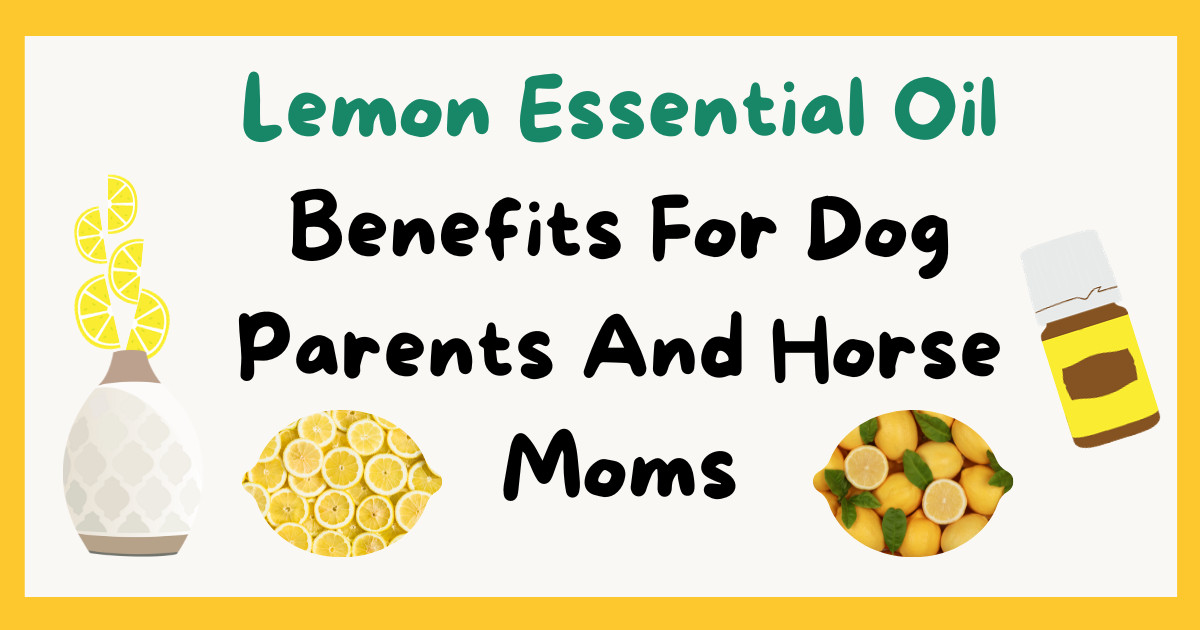
Lemon essential oil, a versatile and fragrant elixir, has a rich history, numerous applications, and unique advantages for dog parents and horse moms. In this blog, we will delve into the world of lemon essential oil, exploring its origins, aromatic attributes, common uses, and its potential to enhance focus in horses, while also addressing how it can benefit our canine companions. Join me as we uncover the zesty secrets of lemon essential oil and its relevance in the world of pet care and equestrian activities. But first, let's start at the very beginning—what is lemon essential oil?
What is Lemon Essential Oil?:
Lemon essential oil is a concentrated liquid extracted from the peel of the lemon fruit, scientifically known as Citrus limon. It's obtained through a process called cold-press extraction, resulting in a fragrant oil that encapsulates the zesty essence of fresh lemons.
Aroma and Characteristics:
The scent of lemon essential oil is a lively, citrusy delight. It's a refreshing burst of sunshine, reminiscent of freshly squeezed lemon juice. This aroma is known for its uplifting and invigorating qualities, often evoking a sense of clarity and energy, making it a favorite among pet parents and horse moms.
Fun Fact:
Here's a fun fact about lemon essential oil: it takes an incredible amount of lemons to produce a small bottle of this fragrant elixir. It typically takes around 75 lemons to produce just one 15 ml bottle of lemon essential oil. This astounding number highlights the concentration and potency of this citrus wonder. This also highlights why a little goes a long way and oftentimes just a drop can be used.
Common Uses:
Lemon essential oil finds its way into the homes and stables of pet parents and horse moms due to its versatility. Some popular uses include:
- Aromatherapy: Lemon essential oil is a staple in aromatherapy, promoting feelings of positivity and reducing stress for both humans and their animal companions. It's also very effective for promoting memory retention and helping with focus and clarity.
- Cleaning: As pet parents and horse moms, maintaining a clean environment isn't always easy. Lemon oil's natural properties make it perfect for odor control and for creating homemade cleaning solutions. For even more tips on making your own safe cleaning products, click HERE.
- Cooking: A drop or two of lemon essential oil can add a burst of citrus flavor to dishes and beverages, enhancing your culinary creations. Fore more tips on how to use essential oils in your food, click HERE.
- Skin Care: When diluted, lemon essential oil can support healthy skin, making it beneficial for both you and your pets.
Using Lemon Essential Oil with Horses:
If you're a horse enthusiast, you'll be pleased to know that lemon essential oil can also benefit your equine companion. Being herbivores, horses are known to react positively to essential oils and their aromas. Lemon oil can be a helpful tool for enhancing focus and relaxation. Inviting your horse to breathe in the scent before a training session can be particularly beneficial if your horse tends to struggle with maintaining attention or concentrating on specific tasks.
A simple and effective way to incorporate the benefits of lemon essential oil into your horse's routine is by inviting them to experience its aroma directly from the bottle. Gently hold the bottle near their nose, allowing them to inhale the invigorating scent. This practice proves especially valuable before training sessions or activities that demand heightened concentration.
Alternatively, you can apply a drop of lemon essential oil to your palm, rubbing your hands together to disperse the fragrance. Extend your open palm to your horse, letting them explore the scent. Afterward, any remaining oil on your hands can be massaged onto the back of your neck, offering you a boost in clarity and focus.
For riders seeking to enhance their cognitive abilities, incorporating lemon essential oil before a lesson can be advantageous. Inhaling the uplifting aroma of lemon can amplify mental alertness and concentration, making it an exceptional choice for riders aspiring to sharpen their skills.
Word About Photosensitivity:
Lemon essential oil is photosensitive, which means it can increase the skin's sensitivity to sunlight. If you plan to use lemon essential oil topically while you are outside, apply it under clothing or in an area that won't get direct sunlight. If you are using it in face creams apply it at night. This precaution will help prevent skin irritation and sunburn.
Practical Household Uses:
Beyond the barn and the riding arena, lemon essential oil is a versatile tool for maintaining a fresh and clean living space. Here are some practical household applications that are particularly well-suited for doggie households:
1. Trash Can Deodorizer: To combat odors in your trash can, place a few drops of lemon essential oil on a cotton ball and tuck it at the bottom of the can. This will keep unpleasant smells at bay. Fore a deep dive on eliminating doggie odor and keeping your household smelling fresh, click HERE.
2. Diffuser Delight: Enhance the ambiance of your home with a few drops of lemon essential oil in your diffuser. This not only brightens any room but also fosters a positive atmosphere. For doggie households, consider a blend of 3 drops of lemon and 3 drops of eucalyptus or lemongrass, which serves as a potent "odor buster," especially in the event of unexpected "doggie accidents." For even more recipes and ideas for diffusing Lemon essential oil, click HERE.
3. Natural Cleaner: Lemon oil's properties make it an excellent ingredient for creating natural cleaning solutions. Mix it with vinegar and water to clean countertops, sinks, and glass surfaces effectively. Or simply add it your natural cleaner to boost cleansing properties or for a natural pet-friendly fragrance. For more tips and recipes to help you easily replace unsafe household cleaners with safer choices, click HERE.
4. Laundry Freshener: Elevate the freshness of your laundry by adding a few drops of lemon essential oil to the washing machine before starting a load. This aromatic addition ensures that your clothes, linens, and pet bedding emerge with a delightful lemony scent, enhancing the overall cleanliness of your doggie household. You can also add several drops to wool dryer balls. To learn more about how you can replace toxic dryer sheets with this eco friendly alternative, click HERE.
And yes, lemon essential oil can be safe to use with your dog! For a more in depth look at lemon essential oil and safety for dogs, click HERE.
Lemon Essential Oil Blends:
For a delightful and invigorating scents, try combining lemon essential oil with other complementary oils. Here's a simple recipe to get you started:
**Lemon Mint Refreshment Blend:**
- 3 drops of Lemon Essential Oil
- 2 drops of Peppermint Essential Oil
- 1 drop of Rosemary Essential Oil
This blend creates a revitalizing aroma that can help clear your mind and boost your energy. Use it in your diffuser or make a room spray by tripling the recipe and adding to a 2 ounce spray bottle. Click HERE for a step by step guide to making a room spray.
Ready to enhance your pet-friendly home and barn with the refreshing power of lemon essential oil? Whether you have dogs, horses, or both, lemon essential oil is a versatile and refreshing addition to your holistic wellness toolkit. Whether you're using it to enhance your horse's focus, improve memory retention before riding, or simply freshen up your living space, its bright and invigorating aroma can elevate your daily routines.
Wondering where I source my oils? I purchase directly from Young Living, known for its 'Seed to Seal' quality assurance process, ensuring pure and premium products. When you use my affiliate link to make a purchase, it supports my small business without any additional cost to you. It's a win-win! Click HERE now to experience the Young Living difference and enjoy the benefits of lemon essential oil. Thank you for being a valued part of my community! As a token of appreciation, I'll personally reach out with something special just for you.
Click HERE to explore Young Living's range of premium, quality essential oils and discover more ways to enhance your living space. Don't miss out – grab your lemon essential oil today and transform your home into a haven for all your beloved animal companions!
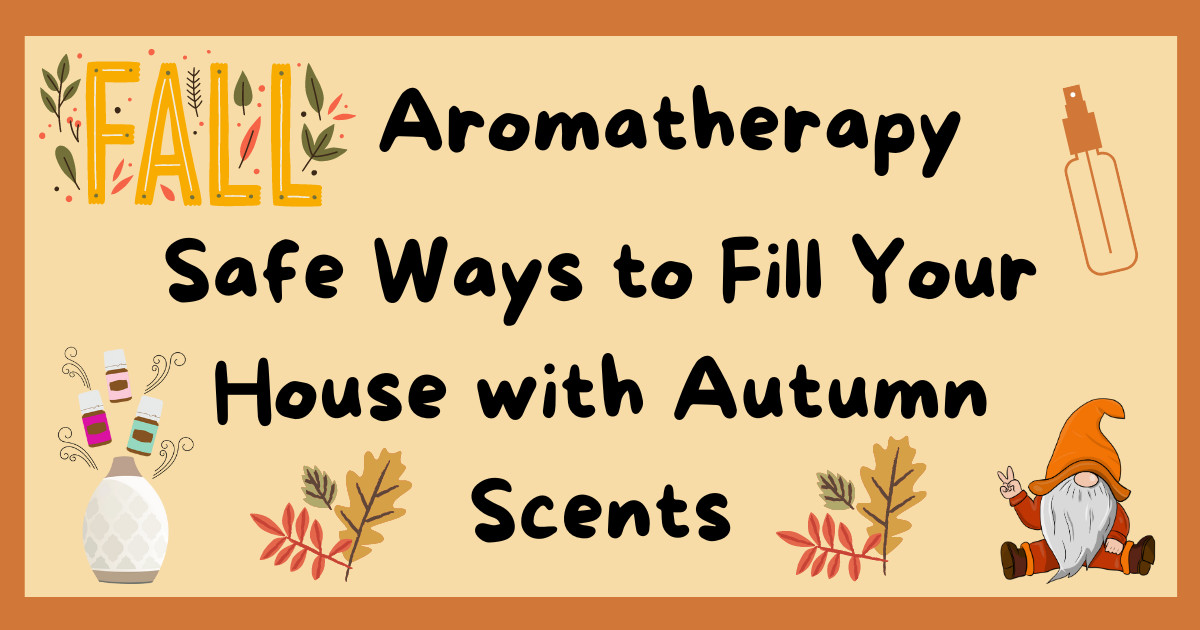
Picture this: the subtle crackle of a fireplace, a warm cup of spiced cider in hand, and the gentle scent of cinnamon and vanilla wafting through the air. There's no denying the charm of a home filled with the cozy aroma of fall. However, the quest to recreate these enchanting scents often leads us to commercial products that can harbor hidden dangers. Synthetic air fresheners, chemical-laden candles, and overpowering sprays may compromise indoor air quality and pose risks to our health. But here's the good news – you can achieve the perfect autumn ambiance safely and naturally by harnessing the power of essential oils. In this blog, I'll show you how to use these botanical wonders to create a welcoming and safe fall aroma in your home, leaving behind the worries of harmful chemicals and embracing the joys of the season.
For dog moms, creating a fall-scented home using natural products is not just about indulging in seasonal bliss but also about prioritizing the well-being of our furry companions. Dogs have incredibly sensitive noses, and the chemicals found in many artificial air fresheners and scented products can be overwhelming and potentially harmful to their health, as well as ours. Using natural scents ensures that the environment remains safe and comfortable for us and our four-legged friends. It allows us dog moms to enjoy the cozy atmosphere of fall without compromising the health and happiness of us or our beloved pets, making it an essential choice!
When it comes to safely diffusing essential oils around dogs, quality and dilution are key factors to consider. Not all essential oils are created equally and many essential oils on the market today are adulterated. High-quality, pure essential oils sourced from reputable suppliers are crucial, as adulterated oils may contain harmful additives.
Dilution is also essential, as dogs have a much stronger sense of smell than humans, and their bodies can react differently to concentrated aromas. It's advisable to place the diffuser in an area where your dog can choose to be near or move away from the scent as they please. Start with a minimal amount of essential oil and monitor your dog's behavior closely. If they show any signs of discomfort, discontinue use immediately. For dive deep into safely diffusing essential oils with dogs, click HERE.
What are essential oils?
Essential oils are highly concentrated, aromatic extracts derived from various parts of plants, including flowers, leaves, stems, and roots. These oils capture the unique scents and beneficial properties of the plants they are sourced from. Through a process of steam distillation or cold pressing, the volatile compounds responsible for fragrance and wellness effects are extracted. Essential oils are renowned for their diverse applications, ranging from aromatherapy and natural healing to crafting delightful scents for your home. Each essential oil carries its distinct aroma and wellness properties, making them versatile tools for enhancing well-being and creating an inviting atmosphere in your living space.
Get ready to embrace the scents of autumn with my carefully curated list of top picks to infuse your home with the warm and inviting fragrances of the season. Get to know the stars of the show: the essential oils that define the scents of autumn.
Cinnamon essential oil boasts a warm, spicy, and sweet aroma that's deeply comforting and uplifting. It's a popular choice for creating a cozy and inviting atmosphere, often associated with feelings of warmth and holiday cheer.
Nutmeg essential oil offers a rich, spicy, and slightly sweet fragrance, known for its warming and soothing properties. It's commonly used to promote relaxation and establish a comforting ambiance, particularly during the fall and winter seasons.
Clove essential oil emits a spicy, warm, and slightly woody scent, celebrated for its invigorating and comforting qualities. This oil is frequently utilized for its potential to boost energy, enhance focus, and foster a sense of well-being.
Cypress essential oil presents a fresh, woody, and slightly coniferous aroma. It's cherished for its grounding and rejuvenating properties, often creating a calming environment and supporting feelings of balance and stability.
Frankincense essential oil is characterized by its resinous, earthy, and slightly sweet scent. It's renowned for its calming and spiritual attributes, frequently used in meditation and relaxation practices, and associated with feelings of inner peace and reflection.
Orange essential oil exudes a citrusy, sweet, and bright aroma that brings cheerfulness and upliftment. It's a popular choice for boosting mood and reducing tension, making it perfect for creating a joyful atmosphere.
Cardamom essential oil offers a warm, spicy fragrance with herbal undertones. It's prized for its invigorating and balancing properties, commonly used to promote mental clarity, ease discomfort, and create a cozy ambiance.
Patchouli essential oil delivers an earthy, musky, and slightly sweet aroma. It's associated with grounding and relaxation, often used to reduce tension in aromatherapy, known for its deep, earthy scent.
Ginger essential oil boasts a warm, spicy, and energizing fragrance, valued for its invigorating and warming properties. It's commonly used to alleviate stomach discomfort, support circulation, and promote vitality.
Cedarwood essential oil emits a woody, earthy, and calming scent. Known for its grounding and soothing effects, it's used to create a peaceful atmosphere, support relaxation, and enhance mental clarity.
Balsam Fir essential oil's fresh, pine-like, and foresty aroma is reminiscent of a walk through a pine forest. It's used to promote vitality and invigorate the mind, making it an excellent choice for nature-inspired scents.
Black Pepper essential oil offers a spicy, sharp, and invigorating fragrance. It's valued for its stimulating and energizing properties, frequently used to support circulation, ease muscle tension, and create a warm and spicy ambiance.
Bergamot essential oil presents a citrusy, sweet, and uplifting aroma. Known for its cheerful and calming qualities, it's utilized to relieve tension, uplift the mood, and create a bright and inviting atmosphere.
Vanilla oleoresin, despite not being classified as an essential oil, offers a warm, sweet, and profoundly comforting aroma. This highly concentrated extract is derived from vanilla beans, and its rich, sweet scent is synonymous with warmth and indulgence. Remarkably, science has made it possible to extract this delightful essence from vanilla bean pods, making it a sought-after choice for infusing fall-themed blends and recipes with a cozy and sweet aroma.
The Art of Diffusing
Diffusing essential oils is one of the most popular and effective ways to enjoy their aromatic benefits. But what exactly is diffusing?
Diffusing essential oils simply means dispersing the essential oils into the air. Hands down, my favorite way to do this is through the use of an ultrasonic diffuser. These devices work by combining water with essential oils and emitting a fine mist into the air, creating a soothing and fragrant atmosphere. This also keeps the essential oil diluted and safe for our dogs. There's also a wide variety of diffusers available, so you can select one that perfectly complements the ambiance of your home.
However, it's worth noting that there are various other ways to diffuse essential oils without the need for a diffuser. You can make a room spray, or even simply add drops onto a cotton ball or wooden clothespin and stash in strategic areas. You can even make a reed diffuser (click HERE to learn how), homemade potpourri, DIY sachets (click HERE to learn how), or your own candles relative simply.
Why Diffuse Essential Oils?
In addition to making your house smell good, diffusing essential oils offers a wide range of benefits, including:
- Aromatherapy: The inhalation of essential oil molecules can have a profound impact on your mood, emotions, and overall well-being. Certain essential oils can promote relaxation, reduce tension, boost energy, enhance mental clarity, and even improve sleep quality.
- Air Purification: Many essential oils possess natural properties that can help purify the air and help eliminate unpleasant odors.
Choosing the Right Diffuser
To fully embrace the art of diffusing essential oils, you'll want to select the right diffuser for your needs. There are several types of diffusers available, each with its own unique features. My favorite is the ultrasonic diffuser. These diffusers use ultrasonic vibrations to disperse essential oils into the air as a fine mist. Click HERE to dive into the various diffusers on the market and see which one is the right choice for your home.
Now that you understand the art of diffusing essential oils and how it can benefit your home and well-being, let's explore some of my favorite recipes for creating the perfect fall ambiance using natural scents.
Here are eight of my go to diffuser blends for fall:
1. Cozy Comfort Blend:
- 2 drops Patchouli
- 2 drops Nutmeg
- 2 drops Cedarwood
- A warm and earthy blend perfect for a cozy evening by the fireplace.
2. Invigorating Morning Mix:
- 2 drops Black Pepper
- 2 drops Ginger
- 2 drops Bergamot
- An energizing blend to kickstart your day with freshness and vitality.
3. Forest Serenity Blend:
- 2 drops Balsam Fir
- 2 drops Cypress
- 2 drops Frankincense
- A grounding blend that evokes the tranquil essence of a forest.
4. Citrus Spice Delight:
- 2 drops Orange
- 2 drops Cinnamon
- 2 drops Cardamom
- A zesty and spicy blend that uplifts the spirits with a touch of warmth.
5. Autumn Harmony Blend:
- 2 drops Clove
- 2 drops Nutmeg
- 2 drops Orange
- A comforting blend reminiscent of fall spices and cozy gatherings.
6. Spice is Nice Blend:
- 2 drops Cinnamon
- 2 drops Ginger
- 2 drops Clove
- A spicy and invigorating blend to warm up your space.
7. Woodland Wanderer Blend:
- 2 drops Cedarwood
- 2 drops Cypress
- 2 drops Balsam Fir
- A blend that transports you to a serene forest walk.
8. Sweet and Spicy Serenade:
- 2 drops Cardamom
- 2 drops Nutmeg
- 2 drops Black Pepper
- A harmonious blend with both sweetness and spice to create a delightful atmosphere.
Feel free to download and print these wonderful diffuser blends by clicking HERE! This will make it super easy for you to access them whenever you're in the mood to create a cozy atmosphere at home. And don't forget, you can always tweak the number of drops or get a bit experimental with these blends to find that perfect scent strength that suits your unique style. Happy diffusing!
If you prefer room sprays, I've got you covered! Here's 5 of my favorite room sprays:
1. Spiced Citrus Burst:
- 10 drops Orange
- 5 drops Cinnamon
- 5 drops Ginger
2. Tranquil Forest Retreat:
- 10 drops Balsam Fir
- 5 drops Cypress
- 5 drops Frankincense
3. Energizing Morning Zest:
- 10 drops Bergamot
- 5 drops Black Pepper
- 5 drops Clove
4. Cozy Comfort Haven:
- 10 drops Cedarwood
- 5 drops Patchouli
- 5 drops Nutmeg
5. Citrus Uplifting Symphony:
- 10 drops Bergamot
- 5 drops Orange
- 5 drops Frankincense
Instructions for all room spray recipes:
1. Prepare a 2-ounce glass spray bottle.
2. Using a small funnel, add 1 ounce of vodka to the bottle.This helps the essential oil mix with the water.
3. Add 20 drops of your chosen essential oils from the recipe.
4. Top off the mixture with 1 ounce of distilled water. You can use tap water, but I like using water with the impurities removed.
5. Add the spray top and shake well to mix the oils and liquids. You'll wan't to shake well each time you spray.
6. Label your room spray and store it in a cool, dark place.
7. Shake before each use, and spritz the room as desired to enjoy the delightful aromas.
These room spray recipes offer a variety of scents to suit your mood and preferences, from spicy and invigorating to calming and comforting. Feel free to adjust the number of drops or experiment with the ratios to find the perfect balance for your room spray.
By exploring the art of natural fall scents with essential oils, you can enjoy the season to the fullest, all while embracing a healthier and eco-friendly approach. As you experiment with the recipes and blend your own fragrances, you'll not only infuse your home with delightful aromas but also create lasting memories of this magical time of year. So, why wait? Grab some fall essential oils and embark on your journey to make your home a welcoming oasis of autumn scents.
If you're curious about where I source my pure essential oils, I invite you to explore Young Living—a trusted brand renowned for its Seed to Seal commitment to quality. To make your fall aroma experience even more delightful, I've crafted a special fall bundle that's perfect for bringing the essence of the season into your home safely. Just a heads up, this is an affiliate link, and when you make a purchase through it, I earn a commission at no extra cost to you. After your order, I'll personally reach out to express my gratitude and send you something special as a token of appreciation. Happy scenting! Discover Young Living and my fall bundle HERE.
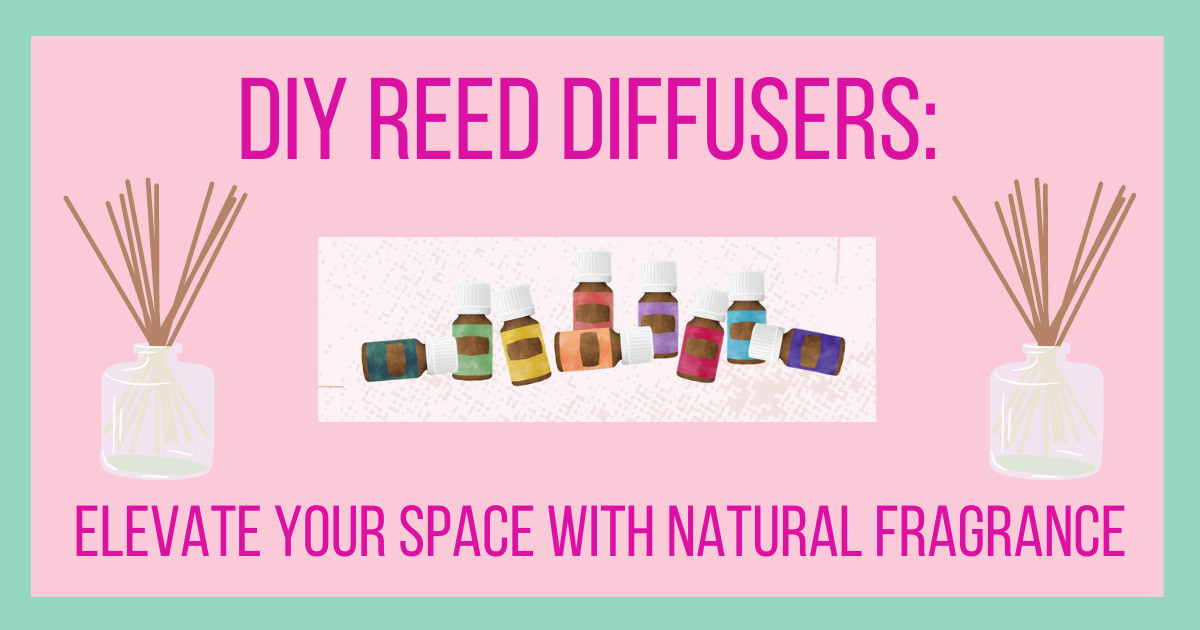
There's nothing quite like walking into a room filled with a delightful and soothing aroma. Reed diffusers are an excellent way to achieve this, and the best part is, you can make your very own using essential oils. Not only will you save money, but you'll also have the freedom to customize your scents to suit different occasions and areas of your home. In this blog, I'll walk you through the ingredients you'll need, provide step-by-step instructions, and share some fantastic recipes, including ones perfect for fall, the holidays, freshening up the bathroom, and creating an inviting atmosphere for guests.
Choosing a reed diffuser is a delightful and practical choice for many reasons. Firstly, it grants you the unique advantage of crafting custom aromas that align with your personal preferences and the ambiance you wish to create. Unlike commercially bought fragrance products that often contain synthetic chemicals and allergens, reed diffusers with natural essential oils are safe for both you and your dogs, ensuring a toxin-free environment. Moreover, they don't require electricity, making them perfect for small spaces like a bathroom. Crafting your own reed diffusers can be a fun and creative project, allowing you to tailor scents to match seasons, occasions, or your mood, ultimately enhancing your living space with a customized and inviting ambiance.
Ingredients You'll Need
Before we dive into the recipes, let's gather the basic ingredients and materials:
- A narrow-necked glass vase or bottle: Upcycling an old glass container is eco-friendly and adds a touch of uniqueness to your diffuser. The narrow opening slows down evaporation, giving you a longer and lingering aroma.
- Reed diffuser sticks: You have several options here, with bamboo or rattan reeds being the most popular. After experimenting with both options, I've discovered that rattan reed diffuser sticks are the superior choice. Their small hollow channels facilitate the flow of the essential oil blend up the stick, ensuring a more effective room fragrance. With bamboo, I never got as strong of an aroma as with rattan. Rattan sticks are readily available on Amazon.
- Essential oils: Opt for premium, top-notch essential oils in your favorite fragrances. A key motivation behind our DIY reed diffuser project is to imbue our living space with a clean, toxin-free aroma. It's important to note that not all essential oils are of the same caliber, and numerous options in the market are tainted or adulterated. To guarantee the purity of what you're diffusing, it's crucial to identify a reputable supplier you can rely on for authentic, unadulterated essential oils.
- Carrier oil: I personally prefer fractionated coconut oil as my carrier of choice. It's a lightweight oil that effectively travels up the reeds, and its neutral scent doesn't clash with the custom fragrance you've created. While I've come across recipes suggesting a mixture of water and vodka as a carrier for essential oils, my experience has shown that this combination results in a less potent aroma and a shorter lifespan for the reed diffuser. As a result, I favor using a carrier oil for optimal performance and longevity.
- Decorative elements: Optional, but you can add dried flowers, colorful stones, or decorative charms to your diffuser.
Step-by-Step Instructions
- Clean the Glass Container: Thoroughly wash and dry your glass container. You can use rubbing alcohol to ensure it's clean and free of any residues if needed.
- Add the Carrier Oil: Pour 1/4 cup of your carrier oil into the glass container. Adjust the amount based on the container's size
- Add the Essential Oils: You can add an individual essential oil or pre-purchased blend. You can also make your own custom scent, the sky's the limit! In general, about 30-50 drops to 1/4 cup of carrier oil works well. Adjust as you see fit for aroma and strength.
- Add One Reed Diffuser Stick: Add one stick first and use it to mix your essential oils and carrier oil well.
- Insert the Remaining Reed Diffuser Sticks: Place 4-8 reed diffuser sticks into the container. Allow them to soak for a few hours, then flip them over to increase fragrance diffusion.
- Flip Sticks: You'll want to flip your reed sticks once a week to every two weeks, this ensures continual gradual release of the essential oil as the carrier oil travels up the reed stick. Replace the oil mixture once a month.
DIY Reed Diffuser Recipes
- Fall Recipe: Combine 15 drops of cinnamon essential oil, 10 drops of clove essential oil, and 10 drops of vanilla essential oil.
- Holiday Recipe: Mix 10 drops of peppermint essential oil, 10 drops of pine essential oil, and 10 drops of cinnamon essential oil.
- Bathroom Freshener Recipe: Opt for 15 drops of eucalyptus essential oil and 15 drops of lemon essential oil to keep your bathroom smelling fresh.
- Company-Ready Recipe: For an inviting and balanced scent, blend 15 drops of lavender essential oil, 15 drops of orange essential oil, and 15 drops of vanilla essential oil.
In conclusion, creating your own DIY reed diffusers is a rewarding and cost-effective way to enjoy natural fragrances throughout your home. Experiment with different essential oil combinations to suit your preferences and the occasion, and don't forget to upcycle glass vases for a touch of sustainability and style. Elevate your space with these delightful scents and welcome guests with a warm and inviting atmosphere, no matter the season. Happy diffusing!
If you're curious about where I source my pure essential oils, I invite you to explore Young Living—a trusted brand renowned for its Seed to Seal commitment to quality. To enhance your aromatic journey, I've curated a special bundle tailored perfectly for your reed diffuser DIY project. This bundle includes all the essential oils mentioned in the recipes above, making it effortless for you to acquire the specific scents you need to create your custom fragrances. Just a heads up, this is an affiliate link, and when you make a purchase through it, I earn a commission at no extra cost to you. After your order, I'll personally reach out to express my gratitude and send you something special as a token of appreciation. Happy scenting! Discover Young Living and my special bundle HERE.
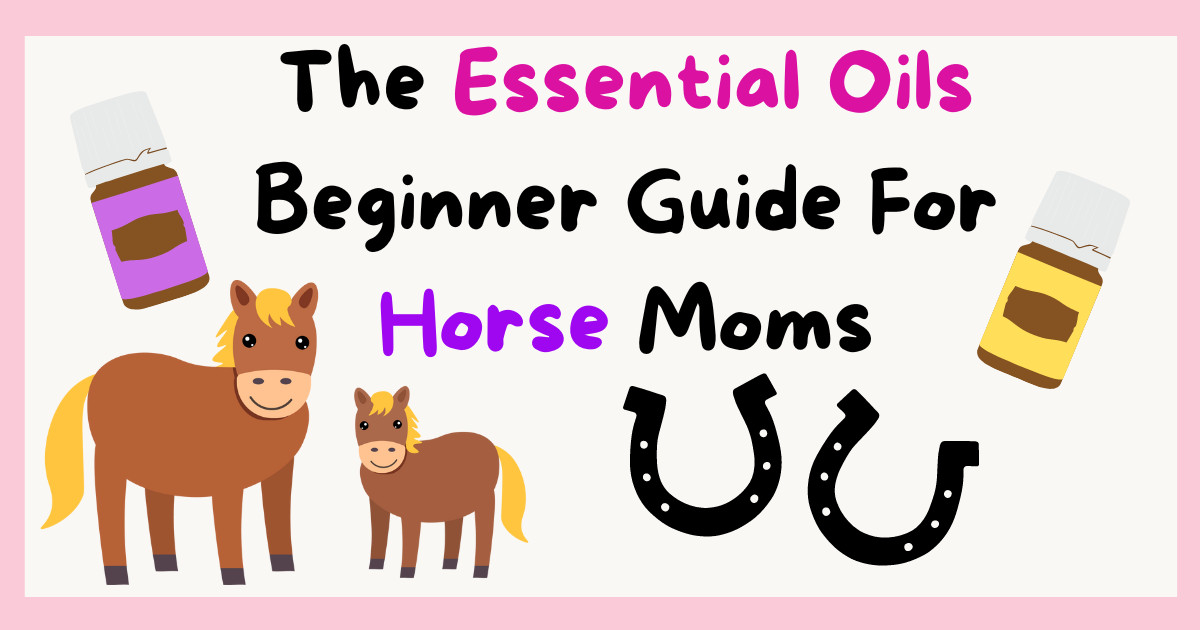
Embracing the journey of caring for your horse is a remarkable experience filled with learning, companionship, and growth. As you delve into the world of equine care, you'll encounter various tools and approaches to support your horse's wellbeing. One such approach gaining popularity is the use of essential oils. In this informative guide, we'll unravel the potential of essential oils for your horse, providing insights into their applications, benefits, and how to get started. From relaxation to revitalization, essential oils can play a role in enhancing your horse's life in a natural and holistic way.
The Power of Essential Oils for Horses:
Essential oils are concentrated extracts derived from plants, each carrying a distinct aroma and a range of potential health benefits. Just as these oils have been used for human health, they can also offer positive effects for your horse. It's important to note that while essential oils can be a valuable addition to your horse care routine, they are not a substitute for professional veterinary care.
Choosing the Right Essential Oils:
Navigating the realm of essential oils for your horse requires careful consideration, especially given the lack of industry regulation. Quality is a cornerstone in this journey, as it directly influences the safety and effectiveness of the oils you use. When selecting essential oils, read your labels and choose those labeled as pure essential oil without fillers or additives. Source your essential oils from reputable companies known for their commitment to purity and premium products. The essential oil market's lack of regulation underscores the importance of scrutinizing your choices. By investing in trustworthy brands, you're safeguarding your horse's wellbeing.
Methods of Application:
Essential oils can be used with horses in various ways:
1. **Aromatically:** Aromatically means infusing the air with the aroma of essential oils. An easy way to do this is by wearing the essential oils as a personal perfume, essentially becoming a walking diffuser. Additionally, you can offer the bottle for your horse to smell, allowing them to experience the aroma. If they show interest, place a drop of oil in your hand, let them inhale it, and then rub the residual oil on your neck. I'm very fond of always saying we are half the equation with our horses and when we are calm and balanced, our horses are too.
2. **Topical Application:** Topical application involves applying essential oils directly to your horse's skin. Essential oils are highly concentrated and potent, which is why it's important to dilute them with a carrier oil. Dilution minimizes the risk of adverse reactions and ensures a safe experience for your horse. Essential oils are much more concentrated than the plant they're derived from, underscoring the importance of careful dilution. Diluting also lets you use the smallest amount necessary to get the job done over large surface areas.
My personal favorite carrier oil for dilution is fractionated coconut oil. This choice combines affordability, excellent absorbency, and the absence of a strong aroma. It's an ideal medium to blend with essential oils, as it remains in liquid form, even in cooler temperatures, makeing it easy to work with and apply.
3. **As a supplement:** Another approach involves incorporating essential oils as a supplement to your horse's diet. This can be easily achieved by adding them to a hay cube, mash, or supplement bucket. However, an essential consideration here is to carefully read the labels of your essential oils. Only use oils that are labeled for ingestion to ensure your horse's safety and wellbeing. This method offers a subtle yet effective way for your horse to benefit from the properties of essential oils. For instance, certain oils like frankincense are known for their potential immune system support. By including them in your horse's diet, you're providing a gentle boost to their overall wellness.
Keep in Mind:
As you embark on your journey with essential oils for your horse, it's natural to have some concerns, especially as a beginner. Here are some tips to help guide you:
1. **Safety:** Your horse's safety is paramount. Ensure that the essential oils you choose are of the highest quality, pure, and premium. Always dilute essential oils with a suitable carrier oil to minimize any chance of adverse reactions. Dilution not only makes the oils safer for your horse but also allows you to stretch their use over time.
2. **Amount:** Embrace the 'go low and slow' mantra. Opt for a lower concentration of essential oils but apply them more frequently, rather than using a large amount all at once. This gentle strategy allows your horse to experience the potential benefits of the oils without overburdening their system. Keep a keen eye on your horse's reactions, and adapt your approach based on your observations. This way, you can ensure that your horse's introduction to essential oils is gradual, comfortable, and aligned with their needs.
3. **Sensitivity:** Just like people, horses have unique sensitivities. Factors such as your horse's size, age, and overall health play a role in how they might react to essential oils. Pay close attention to any cues your horse gives and tailor your approach accordingly. Observing their reactions allows you to fine-tune your use of essential oils and create a positive experience that aligns with their individual needs.
By addressing these considerations, you're well on your way to incorporating essential oils into your horse care routine in a safe, effective, and tailored manner.
Getting Started with Essential Oils for Your Horse: 4 Easy Ways to Benefit
Introducing essential oils into your horse's routine doesn't need to be complicated. Here are four easy ways to use essential oils with your horse that can offer significant advantages for your equine companion.
1. **Calming:** If your horse tends to feel anxious or stressed, using a calming essential oil can work wonders. Choose from lavender, chamomile, cedarwood, or frankincense essential oils. Click HERE to head to my blog post all about specifically using essential oils to help calm your horse.
2. **Muscle Support:** After a workout, your horse's muscles deserve some extra care. Try making a peppermint brace (get the recipe HERE) or a muscle rub with peppermint, lavender, or copaiba essential oils. Dilute them with a carrier oil and create a soothing massage blend. Gently massage this mixture onto their muscles to promote relaxation and ease any tension they might be experiencing.
3. **Breathing:** Clear airways are essential for your horse's overall health. Rub a few drops of diluted eucalyptus or peppermint essential oils onto their chest to help maintain their respiratory wellness.
4. **Hoof Care:** Your horse's hooves play a vital role in their mobility. Incorporating essential oils like tea tree oil or cedarwood oil, properly diluted with a carrier oil, can contribute to their hoof health. Applying this blend to their hooves can help prevent minor issues and maintain their overall condition. Click HERE for my best essential oil recipes for horses hooves.
With these four easy approaches, you can start harnessing the power of essential oils to enhance your horse's quality of life. As you begin this journey, remember to introduce oils gradually, observe their reactions, and tailor your usage based on their needs.
Creating a Positive Experience:
Introducing essential oils to your horse can be an enjoyable experience for both of you. Here are some tips to ensure a positive introduction:
1. **Let Your Horse Choose:** Select an essential oil and present it to your horse. If it piques their interest, wonderful! If not, consider trying another one. Alternatively, you can offer a variety of essential oils to your horse and observe which one captures their preference. They might display extended curiosity towards the bottle or even attempt to gently nibble it.
2. **Observe Closely:** Pay attention to your horse's reactions. If they show signs of discomfort, discontinue use.
3. **Use Positive Reinforcement:** Associate the use of essential oils with positive experiences, such as treats or soothing grooming sessions. This will anchor in positive emotions with the essential oils.
Essential oils can be a valuable addition to your horse care routine, offering natural support for various aspects of your horse's wellbeing. Consult with a holistic veterinarian well trained in essential oils if you have concerns about incorporating essential oils, and be attentive to your horse's individual needs and reactions by starting low and slow. Discovering the potential of essential oils to enhance your horse's quality of life is actually quite simple and can be a delightful journey where you both enjoy the benefits together!
If you're eager to take the next leap and immerse yourself in a deeper understanding of essential oils and their application for your horse, I extend an invitation to join my mini course called 'Oily Horse Intro.' In this course, you'll gain comprehensive insights into 'The What, Why, Where, When, and How' of commencing your journey with essential oils and your equine companion. To access this course, simply click HERE.
